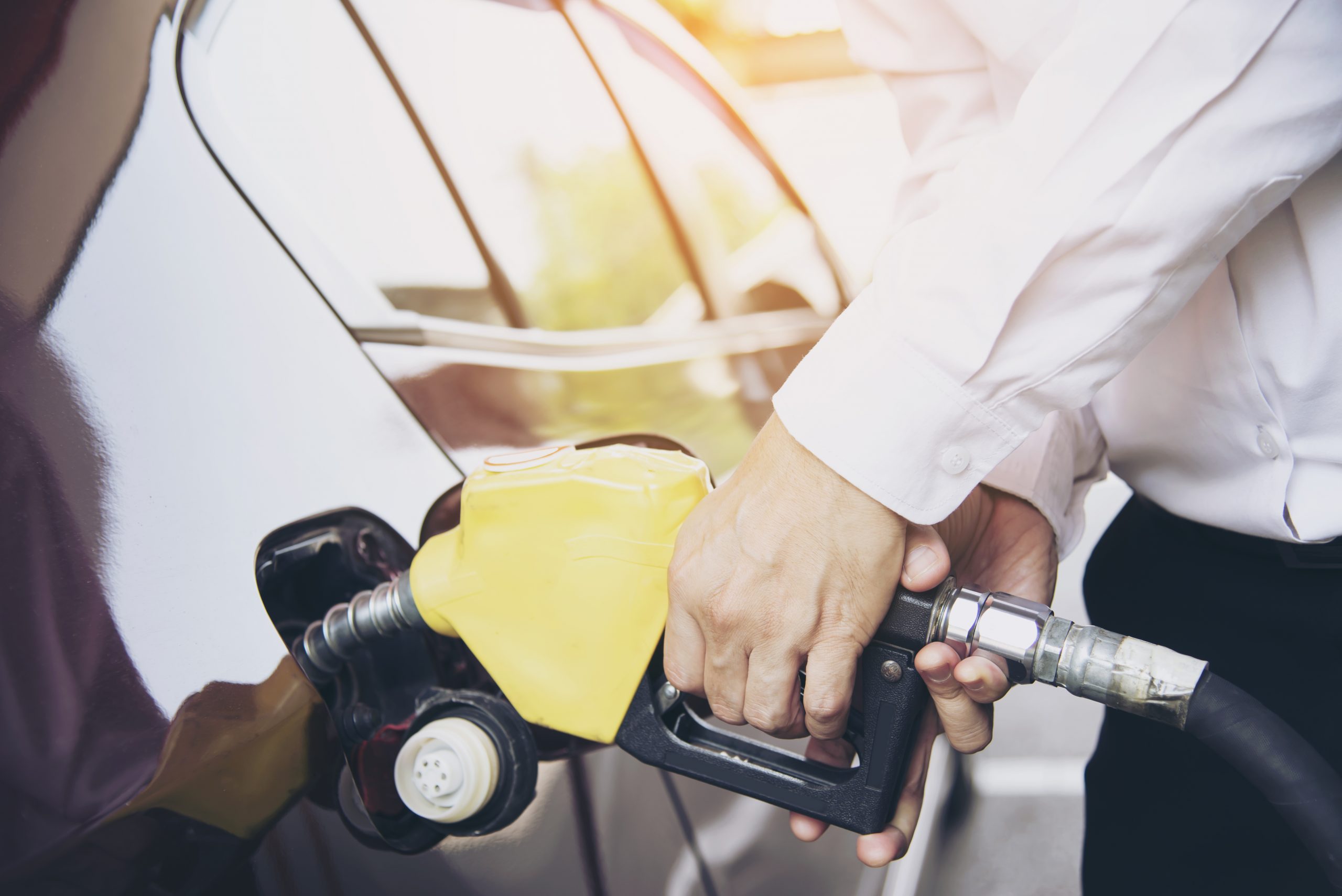Real time theft detection and Fuel Monitoring

The Internet of Things technology is the way forward for the oil and gas industry. Its widespread acceptance will contribute to a 0.8% increase within the global GDP. The primary design goal is to style a system capable of monitoring the fuel information in real time whenever we visit petrol bunks to fill our vehicles. Whenever we visit bunks to fill tanks of our vehicles, they fiddle around while filling it from dispensers since they coded it internally with some digital error coding technique, which dispenses less amount of petrol and show right amount on the display of the dispenser. These frauds are been happening now-a-days in many bunks across the large cities and even small towns. Another problem is fuel thefts once we park our vehicles at some place. Some people remove petrol pipe of auto with other techniques to steal petrol from vehicles. Today world needs digital techniques for measurement of any type of conventional like real time fuel monitoring and theft detection system using IoT. In traditional vehicle arrangement such multi-functional system isn’t implemented like display fuel availability digitally, fuel dispensed from dispenser in bunks can’t be measured & fuel theft from vehicles can’t be avoided. IoT uses a data-driven approach to supply real-time information regarding every detail through the connected assets within the petroleum industry. It powers the economic assets to sense the economic data and directly empowers the longer term of the petroleum business. With a wide acceptance of IoT solutions in the oil & gas sector, tons of data are being generated every day and are analyzed to predict future outcomes.
AREAS WHERE IoT-BASED FUEL MONITORING SYSTEM ARE OFTEN UTILIZED
Fleet Vehicles
The fleet industry is one among the most important sectors that utilize fuel as a resource. With the doorway of smart vehicles within the market, customer expectations have already gone up. The managers using the normal ways of monitoring the fleet had faced many communication issues and unrecognized fuel consumption patterns. It led to a mismanaged and the unnecessary way of fuel usage. Hence, with the advancement of technology and introducing IoT concepts, it has become easier to regulate the amount of fuel being used per vehicle in a fleet.
Mobile Tankers
During the export and import of petroleum products like oil and fuel, the mobile tankers are largely exposed to explosions and thefts. There are chances of un-avoidable circumstances if not taken care properly that can cause huge business losses. Hence, a sensible fuel monitoring solution is often installed to mitigate such challenges. The solution is well- equipped with advanced sensor devices connected to extract important fuel-related data. This data is further helpful in some ways like leakage detection, thefts, or any mishaps.
Tank Farms:
Tank farms are industrial facilities that store petroleum products like fuel, petrochemicals, oil, etc., and transport them to other storage facilities for multiple applications in various locations. These farms are prone to fire explosions and major accidents with even the slightest of fuel leakages. Also, fuel leakages emit oil vapours which will explode with a small spark. If things remain unidentified thanks to any reason, it can cause an enormous loss to the whole property and emit harmful radiations which will affect human life to a large extent. Therefore, a sensible system like fuel monitoring are often installed to watch the real-time situation of the farm.
What is fuel economy and fuel management system?
A fuel management system is a sub-division of a fleet management system that uses telematics-based analytical solution to capture fuel consumption data and improve fuel economy.

Fuel economy in transportation is an indicator of how long a vehicle can travel on a unit of gas/ fuel. In the US, it’s expressed as MPG (miles per gallon). There are many factors that influence the fuel economy (i.e; type of vehicle, engine parameters, age of engine, etc.). However, it can be controlled through innovative ways. Sensible driving behaviour can boost fuel economy from 10% to 40%. Timely and proper vehicle maintenance can increase fuel economy by 4%. Fuel variations (summer gas or ethanol-added gas) may improve fuel economy up to 4%.
PROBLEMS THAT FUEL MANAGEMENT SYSTEMS CAN SOLVE
Monitor fuel costs. Analysing fuel transaction data, it can determine the most economic fuel brand, compare fuel usage across vehicles fuel consumption break-up and generally improve your fuel buying behaviour. Incorporate good driving habits. By collecting information about over speeding, harsh braking, and excessive engine idling, you’ll support efficient drivers with additional incentives and provide training to drivers who have in-efficient driving habits.
Capture and prevent fuel theft and leakage. Fuel monitoring and anti-siphoning devices can update you on fuel amounts in on-site tanks and in trucks by sending alerts about fuel levels.
Calculate and report fuel taxes. Integrated with vehicle’s GPS, a fuel management system can automatically calculate purchased fuel and travelled distance to help file your IFTA tax reports.
How IoT Will Help to Transform Gas Tank Level Monitoring
The Internet of Things (IoT) is uniquely positioned to deal with the most important challenges of gasoline tank level monitoring. By offering solutions that are easy to install, easy to maintain and equipped with automated reading mechanism with zero miss.
TECHNOLOGY:
An IoT gasoline tank level monitoring solution will employ several layers of technology:
- The sensor to capture empty/ fill level data
- A network to communicate the data from the sensors to the particular cloud
- Software to analyze, and present the data to end users in an interface and/or to send and
trigger alerts (text, email, push, etc.)
For sensors, important considerations include cost, installation ease, and measurement frequency and battery life. There are some inherent trade-offs between these attributes; for example, a sensor that measures once every 30 minutes may have a longer life than one that measures once every two hours. Likewise, a device that has a hardened weatherproof rating and has more durability will be more expensive than one that is not weatherproof-rated.
In addition, the mechanism by which the sensor measures fill level is vital for a reliable reading. The best measurement method may depend on the exact fuel we’re measuring in the fuel tank in addition to factors such as the cost of the device. Sensor options include:
• Hall Effect Sensor/Float Gauge
• Ultrasonic Sensor
• Laser Sensor
• Radar Sensor
• Hydrostatic Sensor
A strong option for network may be a Low Power Wide Area Network (LPWAN). LPWANs are designed for IoT communication that’s low bandwidth and long distance, and as a result, is optimized to be low cost and low battery drain. However, the simplest LPWAN type will depend upon the amount, location, and geographic spread of the gas tanks. Potential LPWAN options include:
• NB-IoT
• CAT-M or LTE-M
• LoRa
• Satellite
FUTURE OF FUEL FREE AUTOMOBILES IN INDIA
Currently, in India, pollution is widespread in urban areas where vehicles are its largest contributors and along-with concentration of industries and thermal power plants. Vehicular emissions are of particular concern since these are ground level sources hence have the utmost impact on the overall population. India has made rapid strides in industrialization, and it’s one of the ten most industrialized nations of the earth. But this status, has brought many unwanted and unanticipated consequences like unplanned urbanization, pollution and this risk of accidents. Traditional gasoline powered vehicles are the primary reason of pollution. However with improved technology, the evolution of hybrid vehicles present a better alternative to our future. It provides higher mileage with low pollution The hybrid vehicle is one among the most recent and hottest alternatively powered vehicles. Hybrid electric vehicles are energy
efficient cars or trucks that run on an indoor combustion engine of a gas vehicle with the battery and motor of an electrical vehicle. This leads to twice the fuel economy of gas vehicles. These hybrid electric vehicles consume fewer natural resources than gas vehicles and produce almost no emission fumes compared to the quality gas vehicle.
Concept of Fuel free automobiles:
Hybrid cars are one of the solutions for preserving air quality. Hybrid electric cars were created due to the shortfall in battery technology. The traditional batteries couldn’t generate enough power. These batteries weren’t sustainable for long trips. To mitigate this problem, onboard generator powered by an internal combustion engine was used. These cars were referred to as hybrid electric vehicles which are now being mass-produced by companies like Toyota and Honda.
The hybrid cars’ major advantage is that they almost release zero emissions. These cars use the brakes to regenerate power to the batteries enhancing energy consumption. The cars reduce the dependency on fossil fuels because they’re run on alternative fuels
Hydrogen as Future Fuel:
The use of Hydrogen gas as a fuel has recently been tested by mixing it with compressed gas (CNG) to form H-CNG. Hydrogen as an energy carrier provides the potential for a sustainable development particularly within the transportation sector. A hydrogen engine has the better potential for substantially cleaner emissions than other combustion engines. Other benefits arise from the wide flammability limits and therefore the high flame propagation
speed, both allowing better efficiency.
In November 2020, Prime Minister Narendra Modi had announced the launch of National Hydrogen Energy Mission. This was also reiterated within the Union Budget 2021-2022 by minister of finance Nirmala Sitharaman, a crucial requirement for giant scale adoption of hydrogen, almost like CNG, is that the need for specialised fuel cells.
Author

Dhanraj P. Shetty
Regional Sales Head – North India – Vehicle Telematics
Teltonika India
Enthusiastic, goal- and team-oriented sales professional with an experience in IoT solutions enabling customers to manage fleet accurately and efficiently. Working on India specific compliance products and increasing the adoption of 4G devices.
Published in Telematics Wire
